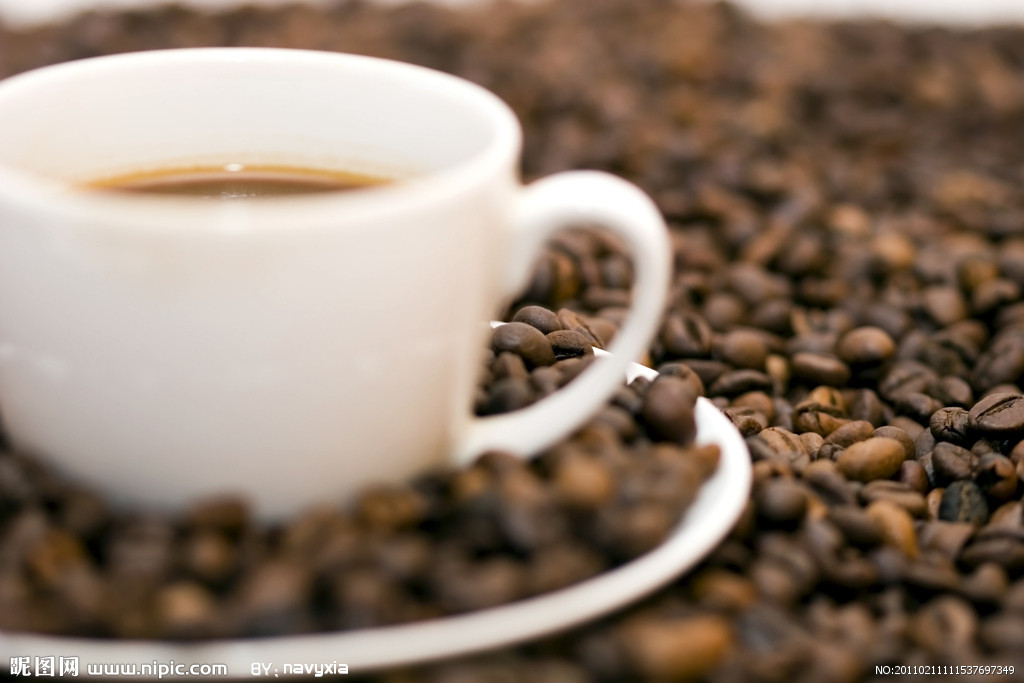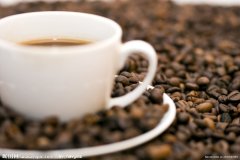Coffee cup coffee cup test the basic knowledge of coffee tasting

1 range
This part defines the operation method and result evaluation of coffee cup products.
This part is suitable for coffee quality identification.
2 normative citation documents
The provisions in the following documents become provisions of this section by reference to this section. All subsequent corrections (excluding corrigendum) or revisions of dated citation documents do not apply to this section, however, parties agreed in accordance with this standard are encouraged to study whether the latest versions of these documents can be used. The latest version of any undated reference file applies to this section.
GB/T 18007 Murray 1999 Coffee and its products terminology
Determination of smell and naked eye as well as impurities and defects in GB/T 15033 Mel 1994 coffee beans
ISO 4072 sampling of bagged coffee beans
3 terms and definitions
The terms and definitions established in GB/T 18007 and the following apply to this section.
3.1
Roasting
The structure and composition of raw coffee beans undergo fundamental chemical and physical changes through heat treatment, resulting in brown coffee and the unique aroma of roasted coffee.
3.2
Grind
The roasted coffee beans are mechanically broken into coffee powder.
3.3
Cup product
The quality of coffee was evaluated comprehensively by using the physiological functions of vision, smell and taste.
3.4 Coffee cup content
3.4.1 Internal quality
3.4.1.1 fragrance
The smell of coffee smelled by olfactory organs is pure, freshly mixed coffee (roasting chromaticity: 120CTN). It has nothing to do with the baking degree.
3.4.1.2 flavor
The taste of coffee, which is composed of olfactory and sensory organs, is pure and fresh to blend the flavor of coffee. It has nothing to do with the baking degree.
3.4.1.3 acidity
A basic taste derived from diluted aqueous solutions of organic acids, such as citric acid and malic acid, that is strong and pleasant, as opposed to the sour taste of fermentation.
3.4.1.4 consistency
How thick the coffee is in the mouth. From light and tasteless to thick and heavy, do not be confused with the properties of aroma and flavor.
3.4.2 Coffee aroma-wine aroma
Similar to the comprehensive feeling of smell, taste and taste felt when drinking red wine.
3.4.3 unpleasant taste
3.4.3.1 Green bean / grass flavor
The smell of green beans or grass.
3.4.3.2 Grain / wood / paper flavor
The smell of grain or wood, oak barrels or paper.
3.4.3.3 gunny bag flavor
The smell of the sack used to store or package coffee beans.
DB53/T 154.9-2006
3.4.4 odor
Coffee can not have the taste, will seriously reduce the quality of coffee beans.
3.4.4.1 Chemical / pharmaceutical smell
It smells like chemicals or drugs.
3.4.4.2 fermentation / stench
The smell of sour (over-fermented) or oxidized fat.
3.4.4.3 earthy / musty smell
It smells of dirt, potatoes, or fungal decay.
4 apparatus
All utensils should be clean and odorless.
4.1 coffee utensils
4.1.1 Coffee roaster
4.1.2 Coffee grinder
4.1.3 weighing balance
4.1.4 Colorimeter
4.2 tasting utensils
4.2.1 cups, porcelain bowls
4.2.2 stainless steel spoon
4.2.3 Cup table
5 Operation
5.1 sampling
The sampling method shall be carried out in accordance with the provisions of sampling DB53/T154.7-2006 bagged coffee beans. Each cup sample weighs 100g mixed sample for roasting.
5.2 sample roasting
5.2.1 temperature control
The samples were put into the roasting machine and the temperature was controlled between 150℃ and 170℃.
5.2.2 Chroma requirements
The reading 120CTN of the colorimeter is used as the standard chromaticity. During the roasting process, the color change of beans in the furnace is constantly observed, and the normal range of roasting chromaticity of the sample is generally required to be between 117CTN~123CTN.
5.3 Grinding
Take out the roasted sample beans and divide them into three equal parts after a little cooling. each part is ground into powder separately, with a grain diameter of 0.4 ~ 0.5%. Each sample of coffee powder is placed in a porcelain bowl with the capacity of 150ml.
5.4 cup product
5.4.1 set the standard sample of the cup.
5.4.2 put 6g coffee powder sample into each small bowl, and each bowl is marked with a serial number.
5.4.3 pour freshly boiled water into a bowl and taste it while it is hot, and fill in the results in Table 7.
49
DB53/T 154.9-2006
Table 7 Cup evaluation record sheet
Name: date:
Grade
None
Low
Low ~ medium
Medium
Medium ~ high
High
Fractional value
0
1
2
3
4
5
Sample
Product
Number
Intrinsic quality
Fragrant
Unhappy taste way
Different smell
Grade
Don't.
Prepare
Note
Coffee
Fragrance
Coffee
Flavor
Fruit
Acid
Thick
Thick
Degree
Sprinkle
Incense
The smell of green beans and grass
The smell of grain wood and paper
Hemp
Bag
Taste
Chemical products
Drug taste
Fermented taste
Foul odor
Earthy taste
Musty taste
Still refer to
3
3
3
3
2
1
2
0
0
0
0
2
1
2
3
4
5
6
7
8
9
10
11
12
13
14
15
16
17
18
19
Each level
Don't.
Index mark
3
4
4
3
3/0
1/0
1/0
0
0
0
0
1
2
3
4/3
2/0
2/0
2/0
2/0
1/0
1/0
1/0
1/0
2
1
1
0
1
0
3
3
2
1/2
1/2
1/2
3
6 Evaluation
Coffee has aroma, flavor, sour taste and consistency and other odors, the stronger the internal quality, the better the quality; unpleasant taste, affect the quality of coffee beans; peculiar smell, will seriously reduce the quality of coffee beans.
Table 8 quality evaluation form of cup products
Rating grade
First level
Second level
Level three
Quality and quality of cup
The aroma, flavor, fruit acid and consistency are good, with strong coffee flavor. Good aroma, flavor, acidity and consistency, good coffee taste. The aroma, flavor, fruit acid and consistency are poor, with a weak coffee flavor.
7 tasting rules
7.1 the number of participants in the cup shall be at least 3, and most of them will be 4-5. The cup-maker shall receive professional training and obtain a training certificate.
7.2 the cup should be carried out in a bright, ventilated, clean and odorless environment.
Important Notice :
前街咖啡 FrontStreet Coffee has moved to new addredd:
FrontStreet Coffee Address: 315,Donghua East Road,GuangZhou
Tel:020 38364473
- Prev

Blue Hawaiian coffee beans the only coffee fields left in the United States
There are a total of 132 islands in the Hawaiian Islands, of which eight are currently inhabited, all of which are basically made up of ocean islands and volcanic islands. Without volcanoes, there would be no Hawaii today. However, there are only two active volcanoes in the Hawaiian islands today, and they continue to contribute to the development of Hawaii. Of the 50 states in the United States, Hawaii serves as
- Next

Basic definition of Arabica coffee fresh fruit Rain concept Basic knowledge of coffee
1 Scope This part specifies the terms and definitions of Arabica coffee fresh fruit, fruit picking requirements, fresh fruit classification, packaging, transportation and temporary storage. This part applies to Pu 'er Arabica coffee. 2 Normative references The provisions of the following documents become the provisions of this part by reference to this part. All subsequent amendments (excluding corrigenda) to a dated reference
Related
- Detailed explanation of Jadeite planting Land in Panamanian Jadeite Manor introduction to the grading system of Jadeite competitive bidding, Red bid, Green bid and Rose Summer
- Story of Coffee planting in Brenka region of Costa Rica Stonehenge Manor anaerobic heavy honey treatment of flavor mouth
- What's on the barrel of Blue Mountain Coffee beans?
- Can American coffee also pull flowers? How to use hot American style to pull out a good-looking pattern?
- Can you make a cold extract with coffee beans? What is the right proportion for cold-extracted coffee formula?
- Indonesian PWN Gold Mandrine Coffee Origin Features Flavor How to Chong? Mandolin coffee is American.
- A brief introduction to the flavor characteristics of Brazilian yellow bourbon coffee beans
- What is the effect of different water quality on the flavor of cold-extracted coffee? What kind of water is best for brewing coffee?
- Why do you think of Rose Summer whenever you mention Panamanian coffee?
- Introduction to the characteristics of authentic blue mountain coffee bean producing areas? What is the CIB Coffee Authority in Jamaica?

